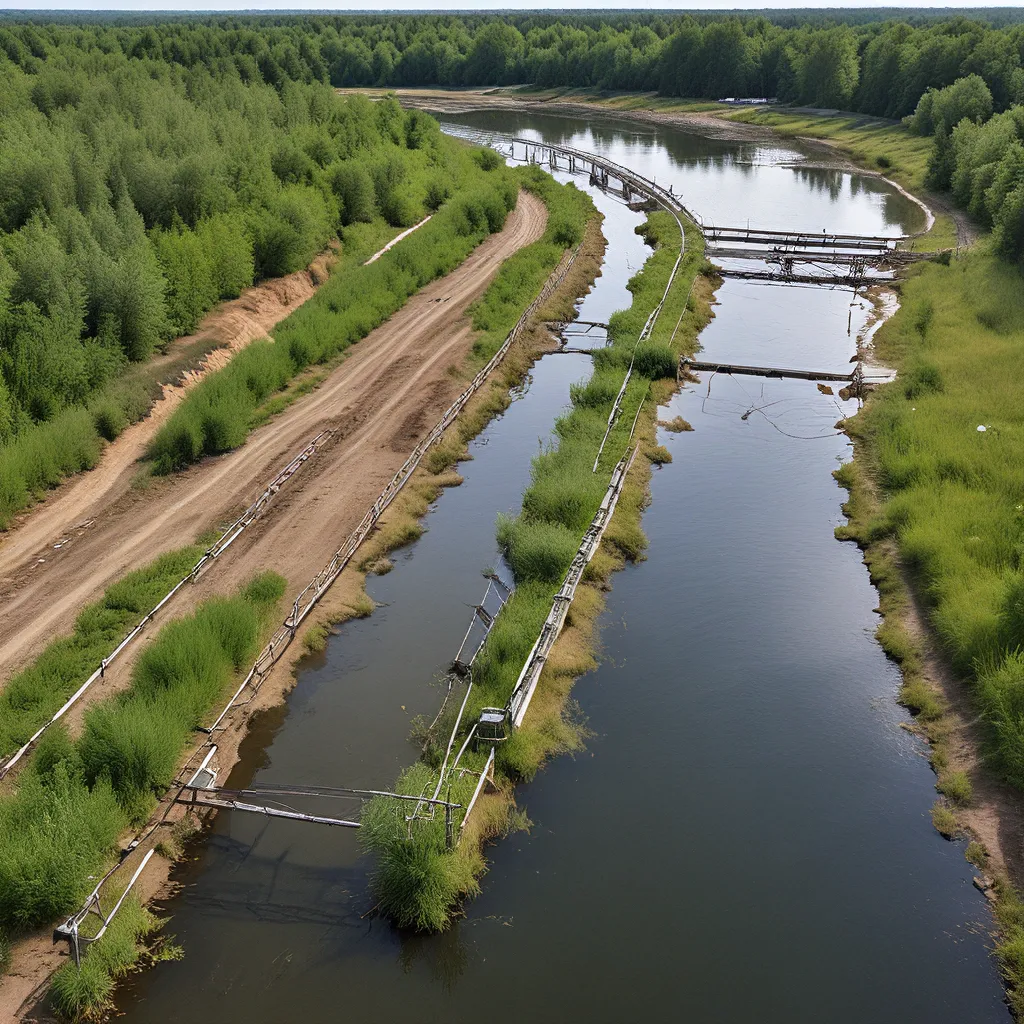
As I dive into this topic, I’m reminded of a quote from a dear friend of mine, an environmental scientist who has dedicated her career to protecting our precious waterways. She once said, “Wastewater treatment isn’t just about removing impurities – it’s about restoring the delicate balance of our ecosystems, one drop at a time.” Those words have stuck with me, and they’ve shaped my own perspective on the critical role that wastewater management plays in safeguarding the health of our planet.
You see, I’ve always been fascinated by the intricate dance between human activity and the natural world. It’s a ballet that requires a deft touch, a deep understanding of the interconnectedness of all things. And when it comes to wastewater treatment, we’re talking about a performance that has far-reaching consequences, both for the environment and for the well-being of our communities.
Tackling the Coral Reef Crisis
Let’s start by taking a look at the plight of Florida’s Coral Reef. This vibrant, living ecosystem is facing a truly daunting set of challenges – from elevated ocean temperatures and coral disease to poor water quality and a host of other natural and human-made threats. It’s a stark reminder that the health of our waterways is inextricably linked to the health of our entire planet.
But the good news is that there’s a concerted effort underway to turn the tide. The Florida Department of Environmental Protection, for instance, has been leading the charge with initiatives like the Coral Reef Restoration and Recovery (FCR3) Program. This ambitious effort aims to develop the infrastructure, technology, and skilled workforce necessary to support the long-term recovery of at least 25% of Florida’s Coral Reef by the year 2050.
The Florida Department of Environmental Protection is playing a critical role in this endeavor, administering more than $90 million in funding to support a wide range of priority projects. These include water quality sampling, nutrient reduction, disease research, coral rescue and propagation, and large-scale restoration actions. It’s a multifaceted approach that recognizes the complex web of factors contributing to the decline of these remarkable underwater ecosystems.
Watershed-Based Solutions
But the fight to protect and restore our waterways doesn’t stop at the coral reefs. In fact, the California State Water Resources Control Board has been pioneering a watershed-based approach to water quality management for over a decade now. By taking a holistic view of entire watersheds, they’ve been able to develop unique and effective solutions that balance economic and environmental priorities.
The Watershed Management Initiative (WMI) is a prime example of this innovative approach. With the input and involvement of local stakeholders, the WMI helps the Water Boards achieve water resource protection, enhancement, and restoration while navigating the complex web of federal and state mandates. It’s a collaborative effort that recognizes the importance of community-based watershed programs and volunteer monitoring initiatives in driving real, lasting change.
The Water Boards’ watershed management efforts have been instrumental in improving water quality and restoring natural habitats across California. And the lessons learned here can be applied to wastewater treatment and ecosystem restoration efforts around the world.
Resource Recovery: The Next Frontier
But the story of wastewater management doesn’t end there. In fact, we’re on the cusp of a paradigm shift in how we think about this critical infrastructure. Instead of simply treating wastewater as a problem to be solved, forward-thinking organizations are starting to see it as a valuable resource to be harnessed.
Take, for example, the resource recovery technologies that are being developed and deployed by innovative companies like Alpha Wastewater. These cutting-edge systems are designed to extract a wide range of valuable materials from wastewater streams, including nutrients, energy, and even clean water. It’s a closed-loop approach that not only reduces the environmental impact of wastewater treatment but also creates new revenue streams and promotes the circular economy.
But the true beauty of this approach lies in its ability to support ecosystem restoration efforts. By recovering and repurposing the nutrients and other resources found in wastewater, we can reduce the burden on fragile ecosystems that are struggling to cope with excess pollution and nutrient loading. It’s a win-win scenario that showcases the incredible potential of wastewater treatment to be a force for environmental good.
Navigating Uncertainty and Evolving Solutions
Of course, as with any complex issue, there’s still a lot of uncertainty and ongoing research when it comes to wastewater treatment and ecosystem restoration. Some experts believe that emerging technologies like advanced oxidation processes and membrane filtration may hold the key to even more effective and sustainable wastewater management. There is debate around the long-term viability and scalability of certain resource recovery approaches, and the full extent of the impacts on aquatic ecosystems is still being explored.
But one thing is certain: the future of our water resources and the health of our planet depends on our ability to strike a delicate balance between environmental priorities and the responsible recovery and reuse of valuable materials. It’s a challenge that requires bold thinking, collaborative efforts, and a deep understanding of the interconnectedness of all things.
As I reflect on my friend’s words, I’m reminded that the work we do in wastewater treatment isn’t just about cleaning up messes. It’s about restoring the harmony between human activity and the natural world, one drop at a time. And as we continue to push the boundaries of what’s possible, I have no doubt that we’ll uncover even more innovative solutions that will safeguard the health of our waterways and secure a brighter future for generations to come.